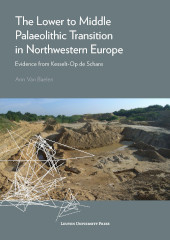The Lower to Middle Palaeolithic Transition in Northwestern Europe : Evidence from Kesselt-Op de Schans
242 p.
A wellâÂÂpreserved early Middle Palaeolithic site set against a wider northwestern European contextThe shift from Lower to Middle Palaeolithic in northwestern Europe (dated to around 300,000-250,000 years ago) remains poorly understood and underexplored compared to more recent archaeological transitions. During this period, stone tool technologies underwent significant changes but the limited number of known sites and the general low spatioâÂÂtemporal resolution of the archaeological record in many cases has impeded detailed behavioural inferences.BrickyardâÂÂquarrying activities at KesseltâÂÂOp de Schans (Limburg, Belgium) led to the discovery and excavation of a wellâÂÂpreserved early Middle Palaeolithic level buried beneath a 10 m thick loess-palaeosol sequence. The present volume offers a comprehensive report on the site, dated to around 280,000 years ago, set against a wider northwestern European context. An inâÂÂdepth study of the lithic assemblage, including an extensive refitting analysis,
provides de.
tailed information on the technological behaviour of prehistoric hominins in the Meuse basin during this crucial time period. This publication is GPRC-labeled (Guaranteed Peer-Reviewed Content).Contributors: Jozef J. Hus (Royal Meteorological Institute of Belgium), Frank Lehmkuhl (RWTH Aachen University), Erik P.M. Meijs (ArcheoGeoLab), Philipp Schulte (RWTH Aachen University), Ann Van Baelen (KU Leuven and University of Cambridge), Philip Van Peer (KU Leuven), Joerg Zens (RWTH Aachen University) [Publisher's text].
Special access authorizations may apply; please contact us for further information.
-
Informazioni


